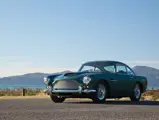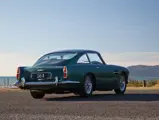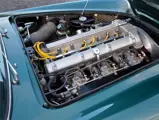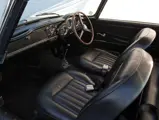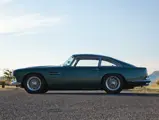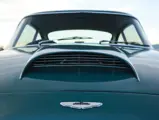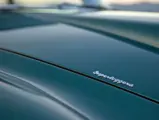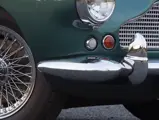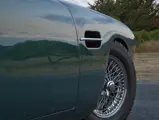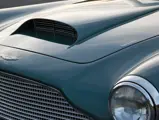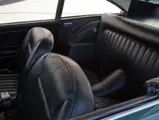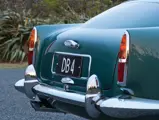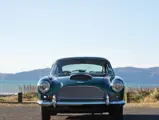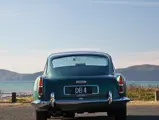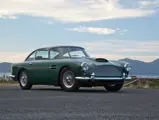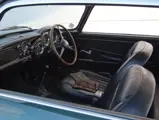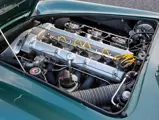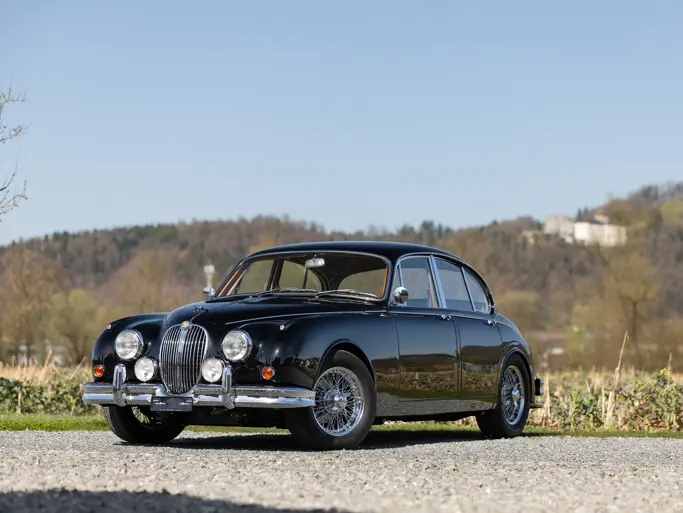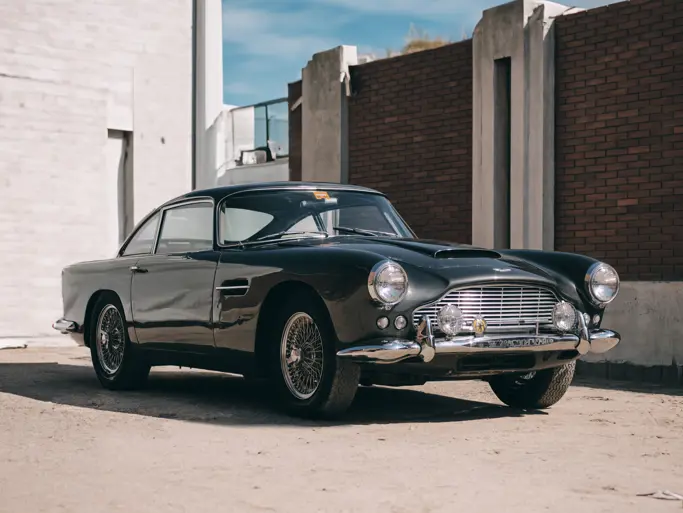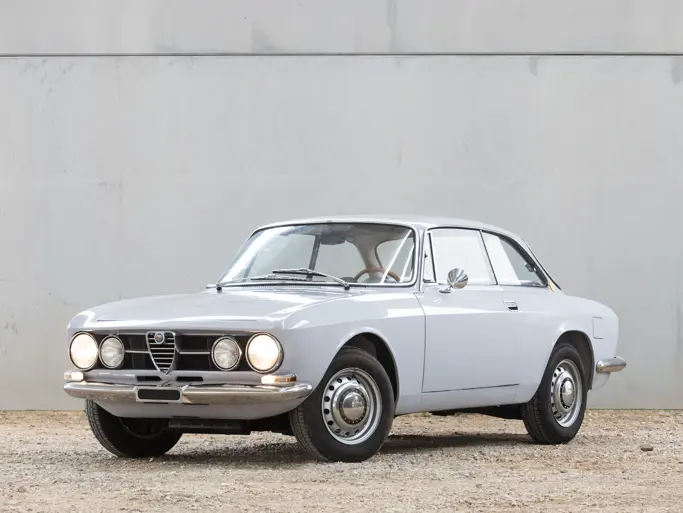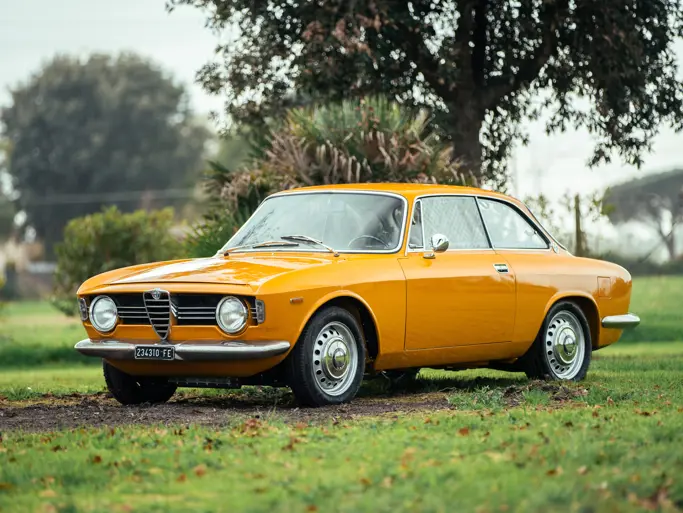Amelia Island 2014
1960 Aston Martin DB4
{{lr.item.text}}
$462,000 USD | Sold
 | Amelia Island, Florida
| Amelia Island, Florida
{{internetCurrentBid}}
{{internetTimeLeft}}

- Single ownership for the last 28 years, and never offered publically for sale
- Documented history from new, complete with original build sheet and owners handbook
- Recent complete restoration, including fresh paintwork
- Features numerous desirable mechanical upgrades
- Matching-numbers example
250 bhp, 3,670 cc DOHC alloy inline six-cylinder engine with triple Weber carburetors, four-speed manual DB gearbox, Salisbury 3.54:1 rear end, independent front suspension with upper and lower control arms and coil springs, live rear axle with Watt linkage, trailing arms, and coil springs, and four-wheel disc brakes. Wheelbase: 98 in.
Aston Martin’s DB4, launched in 1958, served the storied marque as the replacement for the DB Mark III, but it proved to be a very different creature. This would be the first Aston Martin to be built at the company’s then-new Newport Pagnell factory, and it utilized a number of brand-new components and manufacturing processes that would continue to influence the cars that would leave Newport Pagnell for years to come.
David Brown envisioned a complete new-generation car; one that was innovative yet built to the highest standard in its class. Every major component in the car was new. Harold Beach was tasked with the chassis design, creating Aston Martin’s first pressed-steel-type frame. Underneath the bonnet was a 3.7-liter, twin-cam inline six that was engineered by Tadeck Mareck. It had similar dynamics to the Jaguar XK engine, but it utilized aluminum for the block and head. As a result, this engine was one-third lighter than the engine in the DB2 variants, which preceded the DB4. The car was rated at 240 horsepower in standard form, it featured David Brown’s own gearbox, and it had Dunlop disc brakes fitted at all four wheels and rack-and-pinion steering.
To complete the state-of-the-art package, Carrozzeria Touring, of Milan, was commissioned to design the perfectly proportioned DB4 shape. Touring’s patented Superleggera technique was utilized to produce lightweight but sturdy bodies out of aluminum-magnesium, which were wrapped around small-diameter steel tubing. The production bodies were built by Aston Martin at their Tickford Works, under license from Touring. Although when compared to its predecessor, the DB4 had a slightly shorter wheelbase, but it also featured a wider track and improved packaging, allowing for fixed four-place seating.
As the DB4 underwent numerous running changes throughout its five-year lifespan, the AMOC Register has separated DB4s into five series, which roughly correspond to many differences in their configurations. The second series cars, of which 351 were produced, are well regarded for combining modifications to solve certain problems with early production, and they also represent the last series with the attractive one-piece “cathedral” tail lamps, the signature tall bonnet scoop, and the original grille design. The DB4 offered here, chassis number DB4 395R, is one such Series II example.
Chassis DB4 395R was destined for its home market of the United Kingdom, as it was first delivered to Mr. W.E.C. Knott, of Dorset, in 1960. Knott owned the DB4 for seven years before the car was sold to Jack Brunwin, of Croydon, England. Brunwin, his family, and the Aston Martin moved to New Zealand later that same year, where it was registered with plate NZ DX6332. Following Brunwin’s ownership, the car remained in New Zealand, with various owners, before it was purchased by its current keeper, on February 18, 1986, and it has been driven and enjoyed by him for the past 28 years.
In 1996, the DB4’s original engine was completely rebuilt to high-performance specifications, and it utilized triple Weber carburetors, with the intention of giving the car added power and acceleration. After the engine rebuild, this Aston Martin returned to its homeland in 1996, where it represented New Zealand on the FIVA World Rally. The event lasted 1,000 miles, from Edinburgh to Coventry, and it traveled through some of Britain’s most attractive and historic areas. The rally celebrated 100 years of the British motor industry, and over 300 vehicles, from 21 different countries and of different nationalities and age, participated in it.
This DB4 has recently been reconceived by Aston Martin specialists in New Zealand, with uncompromised drivability and upgraded performance kept in mind. The car was stripped down to its bare chassis, and all of the bodywork, which included outfitting the car with all-new, solid front and rear bumpers, was performed by Steve Roberts, a former Aston Martin employee and one of New Zealand’s premier aluminum body rebuilders. In order to keep up with the added performance of the earlier engine upgrade, the owner also opted to have several more performance modifications installed to make this DB4 even more sporting. Mechanical upgrades made to the car included a new oil cooler, uprated Jaguar brakes, and a telescopic rear suspension with a Harvey Bailey handling kit, which included uprated anti-roll bars, heavier torsion bars, and rear telescopic shock absorbers, as well as stiffer springs. Documentation accompanying the car includes the original build sheet and owner’s handbook.
Cosmetically, the interior was completely reupholstered in Black Connolly leather, and the exterior received a repaint in Almond Green, which is an incredibly eye-catching and dynamic color that is often seen on modern Aston Martins. Additionally, it should be noted that the car is currently equipped with a 3.54 rear differential ratio, but a long 3.07 rear differential is also available with the car. The car has accumulated just over 5,000 miles since the completion of its engine rebuild in 1996, and just over 100 miles since its recent restoration. It is truly just as good to drive as it is to look at.
When new, the DB4 was considered by many to be among the best driver’s cars that money could buy, and that opinion has remained true over the past 50 years, since the last example left the factory at Newport Pagnell. This Aston Martin also benefits from wearing its original Superleggera bodywork over a host of mechanical upgrades, which provide an already capable DB4 with even further performance, creating a real wolf in sheep’s clothing.

